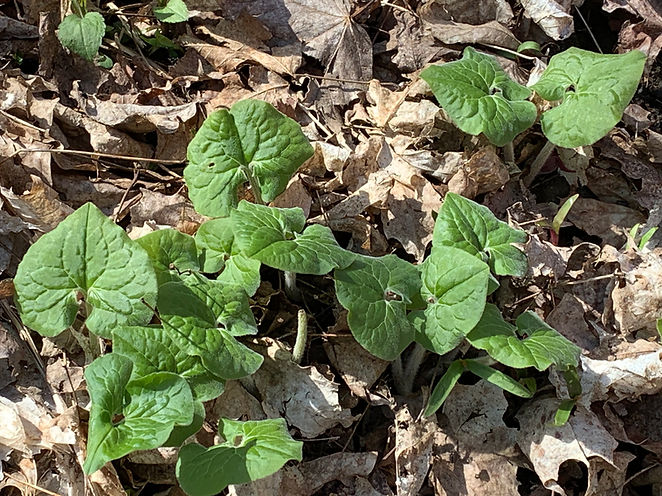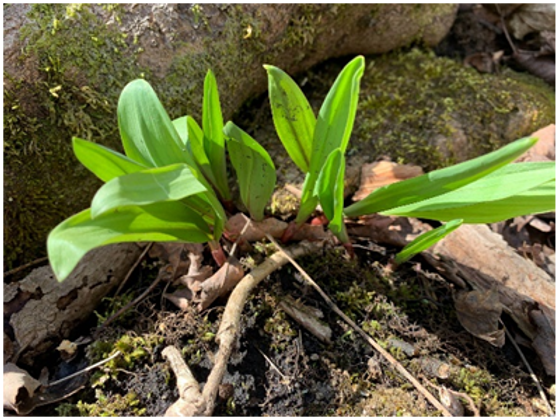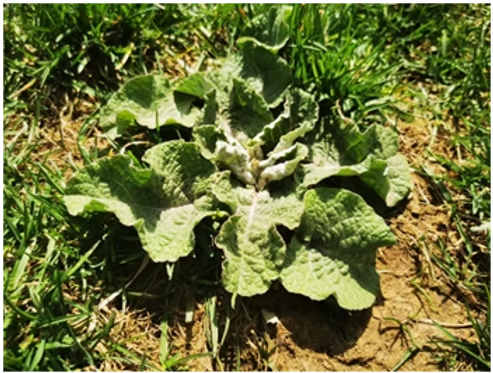April 6, 2023
The exciting spring comes around,
as the cold winter is stepping away…
There is always a saying——spring is a season for growth and life; as new leaves appear on top of branches, as grass on the side walk start growing longer; we believe that most families are prepared and ready to step into the time of spring. On the other hand, pros and cons on the facet of spring could vary, enjoying spring at many aspects could be tough, as most people are not aware of the possible activities in spring, including digging edible wild vegetables.
However, it’s never late to try something new, so for those of you who are interested, you might ask——which types of wild vegetables are actually safe and edible within Ontario?
Well, Wow Nature is going to help you out!
1. Burdock-Arctium spp
Arctium, as one of the plant under chrysanthemum, surprisingly have the function for medicine usage.
Observable Characteristics:
- Have an average height of 0.5-1.5m
- Has a pink or purple flowers with large burrs
- Heart-shaped green leaves, having soft white fur on the back

Guide and information for edible Arctium:
- Young leaves could be use for many ways of dishes, including the present directly into the salad, in stew, or in sauteed in wok
- If the skin of root is being removed, then the root could be use to boiled, sauteed or marinated
- The medicine using leaves to made, could be use as a kind of tea, whereas it also having function to support the purify of blood and improve the function of liver and kidney
Location:
- On the side of the walk
- Within weeds
Precautions:
- Pregnant women should avoid consuming, it may cause miscarriage
- Can affect blood sugar levels
2. Camas
Camas is under the area of asparagus, where it originally came from North America.
Observable Characteristics:
- Linear leaves with a basic length of 20 to 40 cm
- A multi-flowered stem emerges above the main plant in summer
- The color of its flowers varies from lavender to blue-purple or dark purple

Guide and information for edible Camas:
- Its bulbs can be eaten raw
- Taste better when baked or boiled, rich in nutrition
- Camas has little flavor when cooked for a short time
- After slow roasting for 24-48 hours, the color will become darker and sweeter
Location:
- Moist plains and foothills
Precautions:
- It is very easily to confuse Camas with poisonous dead flower bulbs, they grow in very similar areas but have different flower colors; therefore, make sure to take a second look!
3. Wild Ginger
Wild Ginger, appear in mainly east throughout the whole North America, including eastern North America and eastern Great Plains.
Observable Characteristics:
- Large heart-shaped leaves covered with soft fur
- The flowers are deep purple, located between the petioles
- The growth height is less than 15 cm

Guide and information for edible Wild Ginger:
- Could be use to treat many ailments such as coughs, colds, dysentery, and digestive problems
- It can be used as condiments where it has a similar taste to real ginger
- Often added when making tea
Location:
- Usually appear within deciduous forests
- Grows in large areas
Precautions:
- The root of this plant contains aristolochic acid, which is a carcinogenic compound that can sometimes lead to severe issues such as kidney disfunction; therefore, avoiding the root is extremely important.
4. Catnip
Catnip is a labiatae plant with a special smell.
Observable Characteristics:
- Grayish green
- Can grow up to three feet tall
- Serrated, heart-shaped leaves
- Thick stems

Guide and information for edible Catnip:
- Old leaves are suitable for flavoring agent
- Young leaves can be eaten raw
- Can be added when making tea
Location:
- Dry area
- Areas with weeds
Precautions:
- Long-term and high-frequency consumption could cause certain harm to the human body, such as diarrhea
- Excessive use in cats can also cause diarrhea
5. Cattail
Cattail is a small genus with a total of 11 species, which are distributed in almost all regions of the world except South Africa, and are extremely common in Canada.
Observable Characteristics:
- 1 to 3 m height
- Leaves are long, slender and hard
- The form of its fruits is similar to cylindrical clusters as they compact
Image taken from https://education.mdc.mo.gov

Guide and information for edible Cattail:
- The core of the stalk tastes similar to a cucumber and can be eaten raw, boiled, sautéed or fried
- When the leaves are green, it can be steamed or roasted after removing the outer layer of the flower stalk and stem
- The pollen can be collected by shaking the flower heads into a bag and then sifting the contents to separate the pollen, which can be used in both savory and sweet recipes
Location:
- Swamps
- Lakes
- Streams
Precautions:
- Young cattails can be mistaken with some wild members of the Iridaceae family, which are poisonous
- Avoid growing cattails in stagnant water, as it will smell bad and absorb pollutants
- Avoid eating brown-headed fruits by mistake
6. Dandelion
Dandelion is a common plant in temperate to subtropical regions, it is very common in Canada.
Observable Characteristics:
- 5 to 45 cm tall with long taproot
- Rubber stem containing milky white liquid
- Its flowers usually open at the end of the stem and are bright yellow in color
- Its roots are longer and thicker than shepherd’s purse

Guide and information for edible Dandelion:
- The leaves can be eaten fresh in salads, cooked in soups and stews, or dried and used in tea (preferably young leaves as older leaves can become bitter)
- The roost develops a coffee/cocoa-like flavor after hours of roasting in the oven, and can be ground to make tea or used in baking
- The stems can be boiled and used as a pasta substitute
- Cattail could lower the blood pressure, blood sugar and cholesterol
- The leaves grow in shade are more bitter than the leaves grow in sunny places
- For later use, dried or frozen are both fine
Location:
- Weeds
- Roadsides
- Grasslands
Precautions:
- Avoid eating dandelions in lawns or urban landscapes that may have deposited pesticides and pollutants
7. Allium tricoccum
Allium tricoccum is a North American wild onion, widely distributed in eastern Canada and the eastern United States.
Observable Characteristics:
- The petiole is about 20-30cm long
- There are about 2-6 bulbs in a cluster
- Usually with dark purple or burgundy lower stems, the bulbs are white surrounded by a brown to gray sheath
- Each cluster of bulbs produces a flowering stem whose flowers are arranged in umbels, usually 10-40 cm long

Guide and information for edible Allium tricoccum:
- The leaves and bulbs are edible
- The leaves and stems can be roasted, sautéed, or eaten raw
- Has a pungent garlic smell and leek/onion smell
Location:
- Forests with fertile soil and wet ground in depressions, streamside cliffs and alluvial slopes
Precautions:
- Excessive consumption can cause harm to the body.
8. Garlic mustard
Garlic mustard is a species in the cruciferous family.
Observable Characteristics:
- It could produce a rosette of dark green in first year
- Leaves are kidney-shaped with scalloped edges
- The plants will develop 0.3 to 1.2 m tall in the second year, with triangular, alternate, sharp-toothed leaves
- The lower leaves are broad and kidney-shaped, up to 10 cm wide
- The upper leaves are triangular, 5 to 10 cm wide, narrowing towards the tip

Image taken from https://www.eekwi.org/plants/garlic-mustard
Guide and information for edible Garlic mustard:
- Flowers, leaves, roots and seeds can be used
- In summer, when the weather is hot, the leaves will become a bit bitter
- Can be shredded and added to soups, chips and other dishes
- The leaves have a strong garlic smell
Location:
Especially common in moist deciduous forests.
The above introduces eight common edible wild vegetables.
For the sake of safety, it is recommended that you read some more detailed information before eating.
WOW Nature wishes everyone could enjoy, and taste the delicious happiness of Spring!

